200+ Easy and Fresh Fundraising Ideas for Any Cause [2024]
There are thousands of reasons to fundraise—from helping individuals cover their medical bills to nonprofits funding their mission-based programming. No matter the cause, all fundraisers know that the right fundraising idea is the key to success.
With such a wide range of possible fundraising campaigns, how can you decide which is right for your needs and supporter base? To help guide your decision, we’ve compiled a comprehensive list of our favorite, easy fundraising ideas. Here’s what we’ll cover:
- Best Ideas
- Event Ideas
- Nonprofit Ideas
- Virtual Ideas
- Unique and Creative Ideas
- Quick and Easy Ideas
- Free or Cheap Ideas
Choosing a Fundraising Idea: FAQs
What Are the Easiest Fundraising Ideas?
Simple fundraising ideas mean spending less time fundraising and more time doing what you love. Choose an easy fundraiser, run your campaign, and then spend your time pursuing a philanthropic cause, playing or coaching a favorite sport, or supporting your community.
With the development of new and efficient fundraising tools, fundraisers can take part in easier fundraising ideas than ever before. While there are many quick and easy fundraisers to choose from, our favorites include crowdfunding and online donation tools that can maximize donations.
What Are the Best Fundraising Ideas?
While “best” is a subjective term, you can determine the most fitting fundraising ideas by taking a look at your need (what you’re fundraising for) and your network of support (who will give to your campaign).
For example, if you’re raising money for an ongoing project, you might choose an online fundraiser with blog-like features to keep your donors updated. If you’re fundraising for a short-term, urgent need, you’d likely find success with a quick fundraising idea to get the money in your pocket as soon as possible.
What Are the Most Profitable Fundraising Ideas?
The most profitable fundraising ideas require little to no upfront investment and minimal fees while bringing in a significant ROI. When you keep your expenses low and maximize your revenue, the vast majority of funds raised will go towards your mission.
For example, an online platform with minimal fees can result in high-profit margins for your fundraiser. More involved fundraisers, like galas and charity auctions, can be more costly to plan and host but turn in a sizable profit. When choosing your fundraising ideas, be sure to consider campaigns that match your team’s fundraising budget.
Which Fundraising Ideas Are Best for My Audience?
You can maximize your fundraising revenue by choosing a fundraising idea based on your audience. After all, even if you have a wide network of supporters before your campaign, they’re unlikely to donate if they aren’t interested in participating in your fundraiser.
For example, if your donor base tends to skew towards an older demographic, you might appeal to them with a direct mail or fundraising letter campaign. By contrast, Millennials and Generation Z overwhelmingly prefer to communicate and give online, making a crowdfunding campaign or other digital fundraising choice ideal.
The Best Fundraising Ideas
Our #1 Fundraising Idea: Crowdfunding
Crowdfunding is a fundraising method that combines the power of social media with the support of your friends and family.
You can tell your story, upload photos and videos, and explain the need behind your fundraiser. Then, share your dedicated campaign page with your social networks via Facebook, Twitter, email, and more.
This way, you can create a unique fundraiser that will raise money and awareness for your cause, project, event, or need.
Why Crowdfunding Works
Fundraising is not a solo endeavor. You need the help of your friends, family, and community to successfully reach your goal.
Crowdfunding is the best way to reach out to everyone in your network and ask them for their support.
A successful crowdfunding campaign (like these great examples) can explain your reasons for fundraising and demonstrate the critical need that a supporter’s gift will fund.
How to Get Started
With Fundly’s low fees, great support, and variety of customization options, you can begin collecting funds today.
Help donors connect even more to your cause by telling your story and posting photos and videos that highlight your mission, project, or need.
Share your campaign with your network! The more you promote your campaign, the more money you can raise.
Matching Gifts
Matching gifts, a form of corporate philanthropy that involves companies matching their employees’ donations to nonprofits, can help your organization reach its fundraising goals in no time.
Companies will match their employees’ donations at a 1:1, 2:1, or even 3:1 ratio, effectively maximizing the impact of a single eligible donation.
Using software like Double the Donation’s matching gift database, donors can discover their eligibility status and take the next steps toward matching gifts with ease. If you are a large nonprofit, consider adopting 360MatchPro to automate your matching gift search.
Google Ad Grants
Google empowers nonprofits to amplify their causes through its Ad Grants program. Organizations can receive up to $10,000 in ad credits every month. Then, they can use these credits to place important pages at the top of search results for valuable keywords related to their work.
Researching which keywords will put you in front of qualified prospects and actively managing your account can be time-consuming. That’s why many organizations turn to Google Grant agencies. They’ll handle everything from the initial application and keyword research to ongoing account management. That way, you can make the most of your grant money.
No matter your cause, Google Ad Grants can help you increase online conversions and inspire new donors so long as you manage your ad credits responsibly.
Text-to-Give
Thanks to developing technology and the popularity of the smartphone, text-to-give is one of the easiest, most convenient ways to give!
To make a text donation, a donor simply texts a predetermined keyword to your mobile giving number. They then receive an automated response with a link to a simple online donation page, fill out basic contact and payment information, and submit their gift.
By partnering with a mobile giving service provider like Snowball, you’ll receive a unique text giving number and be able to choose unlimited keywords! Then, start promoting your text-to-give campaign far and wide so that your supporters know how to get involved.
Direct Mail Fundraising
Direct mail is a low-cost, high-ROI fundraising strategy for reaching donors and garnering support for your cause. With direct mail fundraising, you can send beautifully crafted letters to prospective supporters and encourage them to give.
You’ll also want to include a pre-paid, pre-addressed return envelope with each supporter’s information. Case studies show that this strategy helps increase your response rate by 14%, average gift size by 19%, and overall revenue by 31.5%!
eCard Fundraisers
People love receiving personalized notes! With new digital tools like online greeting eCards, your organization can offer one in exchange for donations. Create ones for every occasion including holidays, birthday fundraisers, giving days, or appreciation outreach.
Simply, choose a digital platform that integrates with your fundraising platform, so you can keep track of your fundraising efforts. Then, customize your eCards with organization-specific designs such as your logo, and a customized note, and press send.
Platforms like eCardWidget come ready for you to upload eCard to your site or Shopify store for your supporters to send each other notes easily. They would then pay via email, social media, or text message.
Live Auctions
Charity auctions can be a fast-paced and energetic way to raise money and interact with donors face-to-face.
Procure charity auction items from local businesses with the goal of getting as many items donated for as close to nothing as possible. This way, you can put your budget into creating a great atmosphere for your attendees to enjoy.
Hire an auctioneer (or do it yourself), send out invites, and provide catering. People will walk away with some unique items and experiences while raising money for your cause!
Nonprofit Training Courses
Sometimes to raise more funds in the long run, you need to invest in your own team.
When you invest in nonprofit training for your staff, you can amplify your fundraising and learn to use funds more efficiently.
Look for a training course provider whose expertise lies in the nonprofit sector, like the Nonprofit Leadership Alliance. Their Leaderosity Learning Library offers new courses each month to keep content fresh and to continue expanding your team’s knowledge about fundraising, effective management, and so much more!
T-Shirt Fundraising
T-shirt sales are a classic fundraising method that works well for all sorts of causes. After all, who doesn’t love a comfortable, stylish, and unique t-shirt?
When you partner with an online t-shirt fundraising service like Bonfire, you can customize your apparel and design an online fundraising page that promotes your cause. Then, supporters who wear your organization’s custom t-shirts in public will essentially function as walking billboards for your mission.
With a platform like Bonfire, you can even accept additional donations on top of your t-shirt sales for only a small processing fee!
Advocacy Campaigns
While not technically a fundraising idea, advocacy and fundraising go hand in hand for many organizations and causes.
Whether you’re fighting for human rights, environmental concerns, policy changes, or any other issue, critical support can take many different forms.
Without advocacy campaigns and rallies, your community would likely remain uninformed. Advocacy options provide your supporters with ways to contribute to your cause in a non-monetary way and raise awareness for your mission.
Peer-to-Peer Fundraising
Peer-to-peer fundraising is similar to crowdfunding, but instead of your staff soliciting donations for your cause, your supporters do it on your behalf!
Peer-to-peer fundraisers require a dedicated peer-to-peer fundraising software solution that allows you to create page templates and track your participants’ progress. To get started, fundraisers create a personalized campaign page, set a goal, and ask their networks to contribute.
With peer-to-peer fundraising campaigns, your organization can raise money and gain new supporters through social proof in the process.
Shoe Drive Fundraisers
Each year, the average person throws away 7.5 pairs of shoes. What if there was a way to turn trash into cash?
Hosting a shoe drive fundraiser is one of the most innovative fundraising solutions out there. Help eliminate millions of pounds of waste all while raising money for your cause by partnering with a company that will turn your shoes into donations!
Shoe drive fundraising companies like Funds2Orgs make it simple to host a fundraiser. Most organizations end up raising a few thousand dollars through this free fundraising idea!
Volunteer Grants
Chances are, your organization relies on volunteers to power your work. But did you know that their hard work can also bring in extra revenue?
Through volunteer grants, employers promise to donate to nonprofit organizations where their employees regularly volunteer. All your volunteers have to do is submit a form to their employer with details regarding their work for your nonprofit.
No matter how prominent of a role they play, this is a valuable fundraising opportunity for your nonprofit — especially considering that 80% of companies with volunteer grant programs give between $8-$15 per hour volunteered.
Engaging Event Fundraiser Ideas
Battle of the Bands
A Battle of the Bands event can be an opportunity to raise money for your creative project and a chance for local talent to get their music out into the community.
Create a physical and online sign up sheet for local bands who want to register. Spread the word about your event on social media, via email, and with flyers.
Charge an entrance fee at the door or sell tickets online beforehand. You can also set up a concession stand to bring in some extra money.
Serve-a-Thon
A serve-a-thon fundraiser helps your club or organization raise money while cleaning up your community at the same time.
Ask for donations per item of trash that you pick up on a given day. For example, someone might donate a dollar for every aluminum can you pick up.
Collect sponsorships and donations from people in your community. Then, get out and clean up your town!
Silent Auctions
Silent auctions are a fun way to get a little more face time with your donors while they bid on unique and appealing items. Plus, desirable auction items can boost your fundraising potential!
Ask local businesses and individuals to donate items to your silent auction. Common items include gift cards to restaurants, signed memorabilia, lessons from local professionals, gift baskets, vacations and getaways, and more!
You can enlist the help of a mobile bidding tool to create a tech-enhanced bidding experience for your attendees. Mobile bidding software also makes checking in, checking out, and item monitoring easier on your auction volunteers and staff.
Carnival
Holding a spring or fall carnival can bring your community together for some fun and games while you raise money for your cause.
All you have to do is organize some simple (but still really fun!) games and activities, get the word out about your event, and charge an admission price.
You can even sell concessions if you want to make a little extra money throughout the afternoon or evening.
Themed Fundraising Party
Themed parties are more common for nonprofits, but anyone can use them to raise money for their cause.
Charge a few dollars at the door. People that show up in a themed costume can pay a small fee while those in “normal” clothes can pay a little bit more.
Don’t forget to promote your themed fundraising party on social media. You want supporters to invite as many people as they can to help you raise more money!
Obstacle Course Event
Obstacle courses can be fun challenges for kids, teenagers, and adults alike. Your club or organization can set one up to raise some extra money!
Create different games and obstacles that make up the courses. Then, set up an online registration form.
Give people the option to participate as individuals or in teams. And don’t forget to offer a small prize for whoever gets through the course the fastest!
Classic Car Show
If members of your club, organization, association, or community like to build, refurbish, and drive classic cars, this is the fundraising event for you!
Get as many classic cars together as you can and line them up in a common space like a parking lot or field.
Then, charge admission for people to come through and view the vehicles. You can even have side events like a raffle or auction to raise even more.
Angel Festival
An angel festival is a Christmas-themed fundraiser that gives you a chance to raise money for your cause.
First, you’ll need to recruit volunteers to design and craft life-size angels out of whatever materials they want. Then, display the angels at a festival and sell hot cocoa and cider.
People vote on their favorite angel by placing money in containers underneath each one. It’s that easy!
Art Show
If you have a passion for the arts, you can use your interests to raise money for your project or cause!
Search your community for talented artists or use your own works to host an event that displays your creativity or puts local artists in the spotlight.
On the day of the event, charge a few dollars for admission and set up a donation table or booth for general contributions. And don’t forget to price the artwork for sale!
Decorating Contest
Many students and coworkers love bringing their own unique touches to their dorm rooms and office spaces. You can put that creativity to use and fundraise with a dorm or office decorating contest!
Spread the word a month or two in advance so that contestants have time to prepare. Then, lead attendees through the halls, letting them vote on their favorite space with their dollars.
Whoever has the most by the end of the night can win a small prize or a portion of the money raised.
Field Day
Many kids take part in a field day event in elementary school, but that doesn’t mean older children don’t enjoy them, too!
Get your older kids involved in an active event by hosting a field day. You can plan for traditional games like tug o’ war, three-legged race, water balloon toss, and more! But don’t hesitate to add your own unique field day games to the mix.
Charge a small admission fee or charge per game at the event. You can even sell concessions and merchandise like water bottles, t-shirts, and baseball caps.
Fundraising Walk
Many walkathons are organized to raise money for a medical cause. Larger research institutions usually set up and promote these fundraisers. However, if you want to set up a smaller-scale community fundraising walk for your particular cause, you definitely can!
Get in touch with friends and family members who have supported you in the past and ask if they would be willing to participate. You can also market the event to the larger community.
Charge an admission fee and sell merchandise such as t-shirts, water bottles, and hats along the walkathon route. And don’t forget to set up water stations for your participants!
Bingo Night
Bingo is a fun and easy game that even the youngest children can play. Use a weekend night to host a family bingo night to raise money!
A bingo night can be a great way to educate people about your cause as well.
Throughout the night, remind attendees what you’re raising money for and encourage them to make contributions during the event. The majority of your proceeds will come from selling admission tickets, concessions, and merchandise.
Pet Party
A pet party can be as elegant or laid-back as you want. It could be a fancy gala-type event where pets and humans alike get all dressed up, or it could be an informal gathering at a local park on a Saturday.
Either way, you should set up a donation table so that pet owners can donate to your organization or cause.
Make sure that you have plenty of bowls of food and water set up for the dogs and other pets. You can even buy or make pet-themed snacks for the pet owners to munch on while their pets play.
Parents’ Party
If your community has a lot of families, you can host a parents’ party while you watch the kids. Hosting a parents’ party is an excellent way to give mom and dad a night out with their friends while you raise money!
All you’ll need to do is find a venue. Then you can charge a small amount and set up a fun night of food, drinks, and socializing for parents. You can also set up a donation box for other contributions.
You can even get volunteers to look after the children so that parents don’t have to pay extra money for a babysitter. Take care of their evening from start to finish!
Family Fun Day
A Family Fun Day can be an easy way to raise money for your organization or cause. Plus, it brings your supporters and their families together for an afternoon.
Set up games, food and drink stations, and a donation table. Then, send out invitations to your supporters. You can also hang up flyers around town to get the whole community involved!
You can host your Family Fun Day during the weekend. Have signs that direct people to the outdoor area you organized for fun, games, food, and fundraising!
Backyard Barbecue
Everyone loves a good old-fashioned barbecue. Whether you’re making ribs, chicken, or veggie burgers, a barbecue is a great way to bring your community together for a common cause.
You can use your summer barbecue as a way to raise money for any organization, project, or cause. All you have to do is advertise!
You can either charge a fee for your barbecue or simply set up a donation table with a jar for change. Make sure you explain the cause you’re raising money to drive donations.
Barter and Trade Fair
A barter and trade fair is similar to a garage sale, but instead of purchasing items or services with money, people trade items.
You can raise funds for your cause by charging each person an entry fee or a fee for every item/service attendees bring to barter. Plus, you can sell snacks and drinks to raise even more!
Use your monthly newsletter (if you have one) or post flyers around the neighborhood to let your community know about the event.
Car Wash
A car wash is a great fundraising idea for nonprofit organizations and individuals that gets everyone outside. Plus, it’s an incredibly simple fundraiser to pull off.
All you need are the suds, water, some sponges, and signs for advertising. Simply charge around $5-10 per car, and accept donations from those who would like to give above and beyond!
Rally a group of eager volunteers to stand a safe distance from the road and draw attention to your car wash with signs.
Dance Off
A dance-off fundraiser can be a great way to bring your community together and raise money for your organization or cause!
All you have to do is set up a registration process and charge participants a small fee.
You can raise more money by charging admission for attendees and selling concessions and branded sports merchandise during the event.
House Party
You’ve probably hosted a few get-togethers for your friends and family members (or even a few for your organization). Use these opportunities to raise money for your cause!
You don’t have to make the night all about raising money, but be sure to mention your crowdfunding campaign and encourage people to make donations.
When you pull off a successful house party fundraiser, you’ll raise money for your cause while also providing your supporters with a fun night to remember. You can also provide or sell refreshments to guests to bring in some added revenue.
Seasonal Fundraiser
Seasonal fundraisers can take many forms, but their unifying feature is that they are related to the current season or holiday.
For instance, you can sell wrapping paper during Christmas, set up a pumpkin patch in October, or sell tulips around Mother’s day. The options are endless!
Seasonal fundraisers are great because you will always have a way to raise money, regardless of the temperature, time of year, or occasion. Additionally, you can make your seasonal fundraiser as involved or hands-off as you want. The fundraising decisions are up to you!
Face Painting Event
If there’s another fundraising event going on in your local community, ask if you can set up a face-painting booth to raise additional funds.
To get started, make sure that you have lots of different designs and patterns as well as paint that is safe for sensitive skin.
You’ll also need to locate a volunteer or two with artistic abilities who are willing to paint faces at the event. Then, charge a small fee for each person and put out a general donation jar to raise even more money for your cause.
Multicultural Fair
A multicultural fair is a great way for schools and other organizations to raise funds and showcase their diverse heritages.
Student groups can perform cultural demonstrations or sell products and food. Offer an incentive to the group who raises the most money!
Though this event will take a good deal of planning, you have the opportunity to raise money while celebrating different cultures at the same time.
School Picnic
A school picnic is a chance to get the entire student body outside for some fresh air, food, and fun.
Sell picnic tickets to students and families so that they can enjoy spending a unique lunch period in the sunshine. Alternatively, you can host your picnic on the weekend when parents are more likely to be available.
All your school needs to do is choose a nice spring or fall day, set up picnic tables or blankets, and provide food and drinks to your attendees.
Haunted House
Boo! Don’t be scared; it’s just your next creative fundraising idea! A haunted house is a fun way to raise money for your cause.
Enlist the help of a few spooky volunteers to dress up as ghouls, goblins, witches, and zombies.
Then, charge an admission fee for members of the community who think they can make it through your haunted house without getting scared. Sell cider, hot cocoa, and autumnal treats as concessions to earn extra money.
Memorial Dinner
An easy way to raise money and bring friends and family together after the passing of a loved one is to host a memorial dinner.
You can ask people to donate food and drinks. Set out a general donation jar for individuals to contribute to throughout the evening.
As people eat and mingle, they can reminisce about the life of their loved one. A memorial dinner is a great way to help cover the cost of a funeral or memorial service while remembering the life of the person you care about.
Cultural Cuisine Night
A cultural cuisine night is perfect for adventurous and food-loving travelers looking to raise money for a trip, organizations educating supporters on diversity, and so many other causes. All you’ll need are some supporters who like to cook and eat!
Invite people to submit their unique and exotic dishes with a small donation attached. You can keep the meal specific to a country or region or let your cooks choose their own dishes.
People can then vote on their favorite dishes with their dollars. Whoever has the most “votes” at the end of the night can walk away with the pride of being the best exotic chef.
Geography Bowl
If you have a few geography buffs in your friend group or family, you can host a game of geography bowl to put their knowledge to the test and raise money for your cause!
A geography bowl is essentially a trivia night, but with only geography questions! You can host the event in your home or reach out to a local restaurant or bar.
Charge a small admission fee and encourage people to make donations throughout the night. Everyone will have fun guessing the answers to tricky geography questions, and you’ll raise some money for your cause!
Rock-a-Thon
If you need to raise money for an upcoming event or cause, try hosting a rock-a-thon fundraiser with your friends and family members! All you’ll need are a few rocking chairs and some willing participants.
In the weeks leading up to your event, request sponsorships for your rock-a-thon. People can donate a certain amount for a particular time period spent “rocking out” (i.e, $5 for every hour spent in a rocking chair).
Then, set out your rocking chairs in a well-trafficked area and advertise!
Karaoke Night
A karaoke night provides your supporters with an evening of entertainment, all in the name of a worthy cause.
To host a karaoke night fundraiser, reach out to local bars and restaurants that regularly hold karaoke events or rent a karaoke machine to set up in another location. Then, raise funds by charging for entry tickets or having singers pay a small fee for each song they sing on stage.
To inspire more participation, consider adding a contest element to your karaoke night. Create categories such as “Best Performer,” “Silliest Performance,” and “Best Dance Moves,” and then allow people to cast votes for a fee.
Talent Show
According to a Gallup survey, 61% of U.S. adults consider their hobbies and recreational activities as highly important to them. By hosting a talent show fundraiser, you can give your supporters the chance to show off their skills and interests—whatever they may be!
Recruit judges, find a large venue, and promote your upcoming talent show on multiple platforms to attract interested participants. Then charge entrance and admission fees for those who want to compete and those who just want to watch.
To raise more for your cause, consider charging for audience votes, selling concessions during performances, and offering professional recordings that participants can purchase after the event.
Comedy Night
Did you know that laughter comes with many health benefits? According to Mayo Clinic, laughing can reduce stress, soothe muscle tension, and even improve your immune system over time. Help your supporters appreciate the power of laughter and generosity by organizing a comedy night fundraiser.
Depending on your budget, you can either open participation to aspiring comedians or hire professionals to perform.
If you’re hosting an open mic comedy night, consider asking comedians to pay a small fee to participate. If you’re going the professional route, you can ask the talent if they’re willing to perform at a discounted rate or pro bono and charge admission fees for supporters who want to watch the show.
Sandcastle Contest
If there’s a beach in your local area, consider hosting a sandcastle contest fundraiser in the warmer months. These events are a wonderful opportunity to get your supporters out in the sun and allow them to show off their creativity.
Choose a theme for your sandcastle contest, such as mythical creatures or futuristic worlds—bonus points if you can make it related to your specific cause. Then, charge individual and group entry fees to compete.
You can either enlist local community leaders to serve as judges or charge small voting fees to spectators. Be sure to have decorating tools and lots of refreshments available to participants throughout the contest.
Costume Contest
Many people put time and thought into their Halloween costumes. In fact, the U.S. spends an estimated $10 billion on Halloween celebrations every year. If Halloween is coming around the corner and you’re looking for a new fundraising idea, consider hosting a costume contest.
Find a location, such as a local park, that will accommodate your spooky decorations. Then, raise funds by charging for admission and costume voting. You can establish categories such as “Most Original,” “Best Group Costume,” and “Best Movie Character.”
To encourage more people to participate, consider offering prizes to the winner of each category. You can even reach out to local businesses to see if they’d be willing to donate gift cards or certificates that you can present at the end of your contest.
Pumpkin Carving Contest
Pumpkins are an icon of the fall season. As the weather shifts, host a pumpkin carving contest to celebrate and raise funds for your cause.
Ideally, you should choose an outdoor location for your pumpkin carving contest, such as a local park or pumpkin patch. Provide tables and tools such as carving knives and paintbrushes for participants. Make sure kids are accompanied by a responsible adult to help them carve their pumpkins.
You can sell the pumpkins that participants will carve and charge voting fees once all the carving is complete. To make your contest even more engaging, consider creating different themes and selling apple cider during your event.
Ugly Sweater Party
During the holiday season, bright decorations pop up everywhere—not just on houses and public buildings, but on people, too! Tap into a festive tradition by hosting an ugly sweater party to rally your community around your cause.
Select a venue, such as a community center or local restaurant, and charge attendance fees for people who want to celebrate the holidays together in their coziest, ugliest sweaters.
At the party, you can organize holiday-themed activities such as painting ornaments or Christmas karaoke. You can even hold an ugly sweater contest and charge a small fee for each vote.
Gingerbread House Decorating Contest
A gingerbread house decorating contest is a wonderful way to engage your community during the holidays. Plus, these fundraisers are easy to participate in and set up.
Set up tables and chairs in a large venue, then assemble gingerbread house kits for participants. Then, charge small fees to compete and vote at the end of the contest.
Don’t limit yourself to only gingerbread houses at your event. Consider selling other holiday items such as ornaments and wreaths that attendees can take home.
Tree Decorating Contest
According to the National Christmas Tree Association, there are around 25-30 million real Christmas trees sold in the U.S. alone every year. By hosting a tree decorating contest, you can lean into the holiday spirit while raising funds for your cause.
Promote your contest to potential registrants, charge a small entry fee, and consider offering tree delivery services to their homes for an additional cost. Then, either appoint a panel of judges to decide on winners or let your community members pay to vote on their favorite trees.
You can even engage supporters outside your local area by making it a virtual contest and having contestants submit photos of their decorated trees for judging.
Snowman-Building Contest
Does your area experience a lot of snow? If so, take advantage of the weather by organizing a snowman-building contest.
Encourage people to pay an entry fee to participate and build snow sculptures in their yards. Then, have them submit photos of their finished creations for judging.
Make your contest more engaging by allowing community members to vote for a small fee, creating categories, and reaching out to local businesses to donate prizes for the contest winners. The benefit of this fundraising contest is that there’s very little cleanup involved—the sun will take care of that!
Eating Contest
An eating contest is a popular fundraiser idea that can spark a little friendly competition among your supporters. Plus, you can choose almost any type of food—from donuts to hot dogs to gyoza.
Consider surveying potential participants in advance to find out what food items they’d be most interested in eating at your contest. Then, charge fees for both contestants and spectators.
To ensure safety throughout your event, ask contestants to sign a waiver before participating and have medical personnel present during the contest.
Pub Crawl
A pub crawl is an excellent fundraising idea that allows your supporters to get to know one another while supporting your cause.
Reach out to local restaurants and breweries to see if they’d be interested in participating in your fundraiser. Then, either sell event tickets to attend your pub crawl, ask businesses to donate a portion of their sales, or both.
You can raise even more funds by asking the restaurant or brewery to create a special drink or dish for the pub crawl that attendees can purchase. Then, sell t-shirts and other merchandise to give attendees a memento they can look back on after the event ends.
Wine Tasting
Around 75% of adults drink wine, with nearly 44% drinking at least a couple of glasses every week. By hosting a wine-tasting fundraiser, you can allow supporters to dress up and sample different, quality wines.
To create a rewarding experience for your attendees, consider hiring or finding a volunteer sommelier to guide your event. Then, reach out to local wineries and breweries to see if they’d be interested in sponsoring your tasting in exchange for brand promotion in your marketing materials.
Beyond selling event tickets, you can host raffles and even hold an auction at your wine tasting to raise funds.
Board Game Tournament
Board games can be a nice way to relax, but if you have particularly competitive supporters, you can host a board game tournament. This type of fundraiser can appeal to people of all ages and provide a whole day’s worth of entertainment.
Have people pay an entry fee to participate and arrange your competitors into brackets. The winners of each match will play each other until the tournament concludes with an ultimate champion.
Depending on your supporters, you can include games such as Jenga and Connect Four. It’s best to choose options with a relatively short playtime and a shallow learning curve.
Nonprofit Fundraising Ideas
Golf Tournament
Golf tournaments are a tried and true fundraising event for nonprofit organizations as well as political campaigns and school fundraisers.
A leisurely golf tournament is a great way to get to know some of the movers and shakers in your community and ask for their support for your charity or cause.
Charge an entrance fee for individuals or teams. Once the tournament is over, make sure to tie your campaign to your event by giving a speech to ask for support from your participants and emphasize the impact of their donations.
Trivia Night
You can organize a trivia night by pairing up with a local bar or restaurant.
Advertise your event well in advance and charge an admission fee for trivia teams who want to put their knowledge to the test.
Make sure that you have a good system for asking questions and getting teams’ answers. You don’t want to have a disorganized trivia fundraiser!
Marathon
Marathons are a tried and true fundraiser for nonprofits that seek to raise awareness and get their entire communities involved for a common cause.
While they can take months to plan, marathons can be excellent opportunities to generate more revenue for your nonprofit or charity to continue advancing your mission.
Get the word out about your event early and make sure that participants are aware of the cause that they’re running for. You can set up an online registration portal so that supporters can pay their entrance fees, buy t-shirts or other merchandise, and share the event on social media.
Olympic Games
Everyone gets excited about the Olympics, and your organization can replicate the Olympic games to raise money for any cause or project.
While it will take some planning, hosting a mock Olympic games can be great fun for the families in your local community. You can organize events like track and field races, swimming competitions, and more!
You can charge a small admission fee for attendees and sell (healthy) concessions as well. And don’t forget the medal ceremony!
Virtual Events
If your in-person fundraiser needs to be modified or you’re having trouble gathering your supporters in a physical location, virtual events are a popular alternative.
Virtual events enable your organization to foster the same level of community and engagement as an in-person event without the need for a physical space. Common examples of these include virtual auctions, galas, walk-a-thons, and more.
If your organization is interested in planning a virtual event or transitioning an existing event to the virtual space, be sure to research more about best practices and technology you’ll need for success.
Chili Cook-Off
A chili cook-off is the perfect fundraising event idea for clubs and organizations looking to inspire their communities to come together and enjoy a great meal.
All you have to do is recruit your best chili chefs, set a time and date, and sell tickets to your supporters and community members to taste each one!
Set up donation boxes in front of each pot so supporters can vote with their dollars on which chili they like the best.
Dog Wash
Just like your typical car wash fundraiser, many people would be willing to pay to have their dog cleaned as well. After all, groomers can be pricey and so many dog owners don’t have the time to wash their furry friends as often as they should.
Plan for a warm and sunny day and advertise your event by hanging up flyers and posting on social media. You can even set up two stations: one for cars and one for dogs. Then, allow supporters to get their cars and their dogs washed simultaneously!
Make sure that you explain where the funds are going during the event to encourage more donations. People will drive off with fresh-smelling, happy pups, and you’ll raise money for your cause!
Pledge Fundraising
A pledge campaign is a unique fundraising opportunity that gathers promises to donate to be collected at a later date, rather than asking for on-the-spot gifts.
Walk-a-thons are a popular choice for pledge campaigns, although a similar structure can be applied to new and exciting ideas as well (like a dance-a-thon!).
Gather supporters who are willing to participate in your event. Provide each participant with an individual fundraising page, empowering them to solicit pledges from friends and family. Plus, be sure to encourage the use of social media and other digital sharing tools to get the word out far and wide.
Art Auction
If you’re an artist or know artists willing to donate their work to your cause, why not try to make some money by hosting an art auction?
Producing enough art for a full scale art auction requires hours of work from multiple artists, so it’s a good idea to partner with other creatives. You can also check in with local auctions to see if they are willing to sell your art for a small fee.
Not only will you raise some extra money for your creative project, but you’ll be promoting local artists in the process.
Rubber Duck Race
A rubber duck race is a silly, family-friendly fundraising event that can be a fun way to get to know more of your local supporters and inform them about your cause.
To get started, simply buy yellow ducks in bulk and write numbers on the bottom of them. Then, sell tickets with the same numbers to your local supporters.
When you release the ducks into a local river or stream, the first one to cross the finish line entitles its “owner” to a small prize. Just make sure you have a way to capture all of the ducks once the event is over!
Benefit Concert
Hosting a benefit concert can be an excellent way to bring your community together to support an organization or cause.
You can enlist the help of local artists and bands to determine the line-up. Alternatively, you could make your concert have more of a karaoke vibe. Either way, your community is sure to have a fun and music filled evening!
Set a date and time, sell tickets at the door, and offer concessions for a small price. Don’t forget to set up a general donation table to accept other contributions throughout the night.
Paw-a-Thon
Walkathons are a popular nonprofit fundraising event that raises money by getting people up and moving. A dog walkathon (or paw-a-thon) is the same thing but with adorable pooches!
Of course, people still participate, but they can bring their (leashed) dogs along to keep them company while they walk.
You can charge an admission fee and sell shirts, baseball caps, water bottles, and leashes to raise more. Try it next summer to raise money. Just make sure to have water stations set up for humans and pups alike!
Game Night
Host a game night where your friends, family, community members, and coworkers can enjoy a few board games!
Make sure that you have a variety of board games to entertain guests throughout the night. Play classic board games like Monopoly, LIFE, chess, dominoes, or experiment with new card and board games to find a new favorite!
To make your game night a reality, you’ll need a space where you can host your event as well as volunteers to help set up and handle admissions.
Used Book Sale
If you’re someone who loves books (or a recently graduated college student), you likely have stacks of books that you won’t read or have read too many times to count!
If you need to raise money for a project or cause, you can try to sell some of your gently used books for some extra cash.
Pick a date and set up a book sale event! All you need is a table located in a high-trafficked area and price tags on the books, and you’re set!
Community Potluck
A community potluck can be an excellent opportunity to get to know your supporters better, educate them about your cause, and raise money for your nonprofit.
Send out invitations a few weeks in advance and promote your potluck event on social media and via email. Then, ask people to bring their favorite covered dishes!
Charge a small admission fee for the event and set up a general donation table or booth. Have a staff member stationed at the table to answer any questions that attendees might have and give them more information about how to get involved and support your nonprofit.
Petting Zoo
If your cause is animal-related or you have many animal lovers in your community, consider hosting a petting zoo fundraiser.
Reach out to a local farm or zoo to see if you can rent a location and farm animals for your event. Then, schedule a warm, sunny day for people to come and meet the animals.
To raise funds, you can sell event tickets, food to feed the animals, and concessions. You can even organize additional activities, such as pony rides and face painting, for which you can charge extra fees.
Community Cleanup
Encourage your supporters to take care of their community by participating in a cleanup fundraiser. You can tidy up a local park, riverbanks, beaches, or schoolyards.
Assemble volunteers, then have them collect donation pledges from their friends and family based on how much trash they manage to pick up.
Be sure to provide cleanup participants with supplies such as gloves, trash bags, and water to help them put their best efforts forward. You can even sell branded t-shirts, water bottles, and other merchandise for volunteers to take home after the event.
Polar Plunge
Do you have supporters who love a good challenge? Consider planning a polar plunge fundraiser, in which volunteers can help raise funds for your cause by jumping into a cold body of water and collecting donations from their friends and family.
If you have a nearby pond that freezes over during the winter, you can cut out a section of the ice for participants to enter. Otherwise, you can fill inflatable pools with ice water.
Be prepared with towels, hand warmers, and snacks at your event. To keep everyone safe, have people sign a waiver before participating and have lifeguards and medical personnel at the scene in case any emergencies arise.
GivingTuesday
Every year after Thanksgiving, GivingTuesday takes place as a worldwide celebration of generosity. With nearly 100 countries having official national GivingTuesday movements, this day is an amazing opportunity for nonprofits looking to raise funds and spread awareness of their cause.
To participate in GivingTuesday, you can start a 24-hour fundraising campaign and promote your donation page on social media using #GivingTuesday. Highlight the urgency of your fundraiser and encourage donors to give by including a fundraising thermometer that illustrates your progress toward your goal.
Then, make your donors’ gifts go twice as far by promoting matching gifts. You might even be able to set up a matching challenge with a major donor or local business, in which they’ll match all of the funds you raise on GivingTuesday if you meet your fundraising goal.
10,000 Steps
For every 2,000 steps a person walks each day, their risk of heart disease, cancer, and premature death decreases by 10%. Encourage your supporters to look after their health by having them pledge to walk 10,000 steps a day for a week or a month, collecting donations from friends and family who want to support their efforts.
Participants can track their daily steps using a smartwatch or phone app. You can help them set up their individual fundraising pages and raise more by providing images they can use and messaging templates explaining your cause.
Another way you can support participants and build a closer community around your cause is by creating dedicated social media groups for them to interact in. In these groups, they can share their progress and encourage one another throughout the challenge.
Food Truck Fundraiser
These days, there are plenty of food truck options for people to enjoy, from tacos to ice cream to smoothies. A food truck fundraiser doubles as a social gathering for your community.
Partner with one or more food trucks that are willing to contribute a percentage of sales to your cause. Then, decide on a location with enough parking spaces and room for people to eat.
At the event, consider setting up a donation box, selling the food truck’s merchandise for a share of the profit, and hosting raffles to raise more.
Bowl-a-Thon
Bowling is a popular activity for family outings, birthday parties, and general recreational gatherings. For a family-friendly fundraiser, host a bowl-a-thon at your nearest bowling alley.
Charge registration fees to participants, which cover bowling shoes and games. Then, have these participants set up individual fundraising pages, where they’ll collect donation pledges from friends and family based on the number of points they score.
On the day of the bowl-a-thon, you can sell food and drinks to both participants and spectators, such as pizza and lemonade. Additionally, you can allow attendees to purchase branded t-shirts and hats to commemorate their experience.
Bike-a-Thon
A bike-a-thon is a tried-and-true fundraising idea that inspires people to get active for a good cause. Participants will sign up to bike along a course and collect pledges from friends and family based on how many miles they cover or how many laps they complete.
Map out a course, either around a local park or along designated roads. Then, enlist participants to set up fundraising pages and bike through your course.
Plus, you can make your bike-a-thon virtual to maximize engagement among your supporters. Rather than setting a specific course, your participants can instead log the miles they bike in their area or on a stationary bike.
Swim-a-Thon
Similar to a bike-a-thon, a swim-a-thon is another stellar way to promote exercise, engage your supporters in friendly competition, and raise funds for your cause.
Partner with a neighborhood pool or school to host your swim-a-thon. Then, register participants who will seek pledges from their personal networks based on how many laps they finish.
Stir up excitement by creating a fundraising leaderboard that features the top individuals who’ve collected the most donations so far. Be sure to recruit a few volunteer lifeguards to help your event run smoothly and safely.
Dodgeball Tournament
Dodgeball is a game that can appeal to people of all ages. Plus, it’s both entertaining to play and watch. Consider hosting a dodgeball tournament to bring your community together and meet your latest fundraising goal.
Choose a spacious venue, such as a park, a tennis court, or a field, and enlist volunteers to serve as referees and scorekeepers. Then charge registration fees and spectator tickets for the dodgeball games.
You can earn even more revenue from your dodgeball tournament by selling concessions to audience members and holding raffles.
Craft Fair
Many people are drawn to the one-of-a-kind quality of handmade items. Bring together the artists and creatives in your community by fundraising with a craft fair.
You can set up a craft fair almost anywhere, from a local park to a school parking lot. Then, you’ll have vendors pay a fee to register and set up a table, while attendees purchase tickets from you to come and browse items for sale.
For an even more engaging experience, consider organizing a few crafting classes that attendees can pay to participate in. This way, they can bring home a few creations of their own!
Paint and Sip
Paint and sip fundraisers combine two popular activities into a single event—painting and enjoying delicious beverages. Plus, you can adapt it to fit your nonprofit’s resources and supporters’ interests.
Assemble a variety of art supplies and refreshments, including stools, canvases, paintbrushes, wine, lemonades, and sodas. Then, recruit a local artist or school art teacher to lead the event.
You can have participants pay a flat fee to register and access basic art supplies and drinks. Then, you can charge extra for those who want additional supplies or drinks.
Convenient Virtual Fundraising Ideas
Custom Website
Give your supporters a central location for keeping up with your cause, making online gifts, registering for events, learning about your adventures, and more by creating a dynamic website for your cause!
Organizations can work with a qualified, nonprofit-specific web design firm to design and develop an optimal site for their fundraising and marketing efforts.
The best nonprofit sites are informative, beautiful, and functional, making it easy for supporters to learn everything they need to know about your mission and get involved on the spot.
Mobile Giving Campaign
Mobile giving is quickly becoming a popular fundraising option for religious organizations and other nonprofits. And there’s a good reason for that: it really works!
To get started, invest in mobile giving software and explain to your donors how to give using their mobile phones. You can even provide videos and images to show supporters how it works.
Not only is mobile fundraising incredibly easy for you to implement, but it also makes sense in our digital age. Many people forget to carry cash, but everyone has their phone on them!
Social Fundraising
Social fundraising not only enables your organization to raise more money quickly, it also helps you expand your existing donor base!
In a nutshell, social fundraising enlists the fundraising help of your current supporters and empowers them to ask for donations on your behalf.
Each supporter builds his or her own donation page from a template tied to your main fundraising page. Then, your supporters reach out and ask for donations toward your mission.
Virtual Bake Sale
Take your traditional fundraising bake sale online! You can make your fundraiser more productive and last longer by placing it in a virtual setting.
Post pictures of your tasty treats online next to your pricing structure for your community to see. Once an item is sold, the baker will be notified and pack up and ship your baked goods. This way, you’re not counting on everyone to have a sweet tooth on the same day. Instead, you can promote your bake sale for a longer period of time and maybe even offer special discounts to incentivize supporters.
Virtual Auction
Charity auctions can be a fast-paced and energetic way for your nonprofit, educational institution, or faith-based organization to raise more money and interact with your donors face-to-face. You also have the opportunity to form some solid business connections!
Ask for charity auction items from local businesses; try to get as many items donated. That way, you can put your budget into creating a great atmosphere for your attendees.
Hire an auctioneer, send out invites, and cater refreshments. People will walk away with some unique items and experiences, and you can raise more money!
Donation Match Challenge
Similar to corporate matching gifts, you can launch a day-long matching donation campaign on social media. To host a donation match drive, you need to partner with a local business who is willing to match all donations made on a particular day.
The great thing about this type of matching donation fundraiser is that donors don’t have to be an employee of the company to have their gift matched.
Share your fundraiser a few days before your event, promoting the business that will be matching gifts. Post reminders everyday leading up the event.
Viral Video Fundraiser
You’re probably familiar with the ALS Ice Bucket Challenge, where supporters dumped ice-cold water on their heads to raise awareness for ALS. Over 17 million people uploaded videos and the organization raised $15 million.
You can create a similar online fundraiser for your cause! All you need to do is pick a challenge or task that can be easily accomplished, is related to your cause, and will be enjoyable to watch.
Have a few of your staff members record themselves completing your challenge, share the videos online with a link to your online donation form, and then encourage others to do the same!
Virtual Giving Days
You’re probably familiar with Giving Tuesday, a national day of charitable giving that started a few years ago. In fact, you might already participate in Giving Tuesday, but that doesn’t mean you can’t create your own giving day.
Giving days work so well because they install a sense of urgency and community in your donors. Your supporters will rally together to raise as much money as possible in the 24-hour period.
Your online giving day will require a lot of online promotion to reach as many supporters as possible. Share the details about your day via social media, in your emails, on your website, and through text messages.
Online Product Sales
Whether you’ve designed branded t-shirts or started a cookie dough fundraiser, you should consider selling your products online. By setting up shop online, you can connect with interested supporters outside your community. Supporters from all over the country (or the world!) can contribute to your fundraiser and receive an awesome item in return.
To start selling online, you’ll need to find a wholesale provider to supply your product and create an online marketplace on either your nonprofit’s website or through another platform.
Let supporters know about your products by sharing a link to your online store on social media and in emails.
Facebook Fundraiser
Facebook fundraisers are a popular choice among supporters who are looking to raise money using peer-to-peer fundraising practices on behalf of the causes they care about. Then, new donors are able to contribute to missions shared through their own networks.
Facebook fundraising campaigns can be started for all sorts of causes, including both nonprofit and personal fundraising needs.
To get started, a volunteer fundraiser can choose to launch a campaign and share it with their social media networks. Then, their friends and followers are invited to contribute. As individuals begin to give, the online campaign can pick up traction and get shared with more and more potential supporters.
Email Appeals
An email campaign can be a fantastic way to engage with new and existing supporters, share updates about your progress, and solicit donations online. With email, you can send a direct appeal to individual donors on a large scale quickly and easily.
To get started, craft a single email template which can be adjusted to each recipient. You’ll want to personalize your message to address each individual by name and acknowledge their history with your cause.
Plus, you’ll need to pay attention to your subject line. Eye-catching subject lines are what gets your email opened and read in the first place!
Virtual Trivia
A virtual trivia night can generate a lot of revenue for your cause while providing participants with a fun night to remember.
To raise money, charge a small fee for participation, either per person or per group. Then, remember to provide a fun prize for the winning team or individual!
If you’re looking to put a twist on a typical trivia game, consider adding a theme related to your cause. For example, if you’re collecting donations for an environmental charity, you might offer categories like animals, plants, oceans, sustainability, and more.
Online Skills Class
Online skills classes are an exciting way to engage participants while raising money for your mission. Plus, it provides attendees with the exclusive benefit of developing a skill of their choice.
Popular options for classes include arts and crafts, cooking and baking, and fitness. Get creative because your classes can be anything that interests you and your supporters!
To get started, connect with experts in your community who have skills you’d like to create classes for. Then, ask if they’d be willing to donate their time for your cause. Set up a live-stream and sell tickets (or collect donations) from supporters who tune in.
Remote Fun Run
In a typical fun run fundraiser, participants gather in a central location to follow a predetermined path for their run. However, this limits your fundraiser’s reach to supporters within a certain geographic area and who can attend during your time constraints.
By adding a remote element, you ensure that supporters from all over the world can get involved. When you go remote, everyone completes the run from their own neighborhood.
Just make sure that participants have access to a time and distance tracker, like a smartwatch or phone, to monitor and report their results.
Recurring Gift Drive
Recurring gifts are the lifeblood of fundraising organizations because they provide a stable income even throughout unpredictable times—even if the gifts are in smaller increments.
It’s a good idea to promote your recurring donation option with every gift made. Consider hosting a dedicated recurring gift drive where recruiting recurring donors is the main objective.
Set a time period and plan a specific fundraising campaign around getting donors to sign up as recurring givers. To do so, you can even offer exclusive perks to recurring supporters, such as limited-time merchandise, behind-the-scenes access to your organization, and more.
Virtual Gala
Fundraising galas are a long-held tradition for nonprofits and other fundraising organizations looking to collect a large amount of donations in a single night.
Now, more and more groups are turning to virtual or hybrid events to increase their outreach, promote health and safety, and reduce venue and catering costs. To host a virtual gala, you’ll need to find online-friendly entertainment (such as presenters and musicians), set a date and time, and encourage supporters to tune in via a real-time broadcast.
If you want to simulate the experience of a traditional in-person gala, invite your attendees to participate in their nicest evening wear from the comfort of their own living room.
Live-Streamed Q&A
A live-streamed question and answer session provides supporters with an exclusive behind-the-scenes look into your organization and your team.
Gather a group of panelists who are willing to partake in a live discussion about your work, including a combination of staff, board members, and volunteers. Be sure to accept questions from the audience submitted in real-time, and prepare a few beforehand to keep the conversation going.
Once your donors have learned more about your operations and what you’re doing to pursue your mission, they’ll be more likely to give to support your efforts.
Virtual Cooking Class
If you have a culinary knack or boarder members with exquisite cooking skills, consider hosting an online cooking class. You can raise money by charging a fee for others to join and create a full menu of food options. Send out your recipes ahead of time, so everyone can plan accordingly.
Then, choose a reliable streamlining platform to show your chef skills off. Be sure to take time to talk about your cause briefly and thank everyone for signing up before diving in!
Birthday Fundraiser
Every day, nearly 17.7 million people around the world celebrate their birthday. While birthdays are a time for people to celebrate with their loved ones, they can also provide an opportunity to make a lasting impact. That’s where birthday fundraisers come in.
Anyone can host a birthday fundraiser by asking their friends and family to make donations to your cause instead of (or in addition to) birthday presents. They can either set up an individual fundraiser on social media or simply direct people to your donation page to contribute.
Share this opportunity with your supporters as a way for them to dedicate their special day to causes that are close to their hearts.
Virtual Tour
Whether you’re a nonprofit zoo, museum, or performing arts theater, an easy way for your organization to raise funds is by offering supporters a glimpse into what happens behind the scenes.
Host a virtual tour by selling event tickets and livestreaming to attendees. Give your supporters the chance to see the impact of their donations firsthand and stop to interview staff and volunteers about their day-to-day experiences.
Additionally, you can raise more by setting up virtual raffles and directing viewers to an online store to purchase branded merchandise like t-shirts and tote bags.
Virtual Movie Night
Many people love sitting down for a good movie with family and friends. However, some might prefer lounging in the comfort of their own home when doing so. By planning a virtual movie night fundraiser, you can provide more convenience to supporters who want to contribute to your cause.
Set up a watch party using a virtual streaming tool such as Teleparty. Then, send out a survey to your community and have them vote on which movies they’re most interested in watching.
To raise funds, all you have to do is charge a registration fee. To make your virtual movie night even more memorable, consider organizing catering to deliver snacks and drinks to your attendees.
Unique and Creative Fundraising Ideas
Teachers in Jail Fundraiser
A teachers in jail fundraiser is a quick and easy way to raise money. Plus, students get a little break from classes, and teachers can catch up on grading and planning.
The premise is simple: classes pay a certain amount to have their teacher thrown in “jail” for that class period. The students get to hang out in the gym, on the playground, or in another communal area.
The teacher simply stays in the classroom and works on planning, grading, or other tasks while helping your school raise money!
Buy-a-Brick Fundraiser
A buy-a-brick fundraiser is perfect for organizations and causes raising money to build or renovate a community building, sidewalk, or other structure (but it can work for any project!).
Before building commences, community members can buy a brick and have a message engraved on one side. This strategy invites supporters to share in the excitement of the project.
These types of fundraisers are perfect for commemorative walkways, staircases, and archways. They help pay for the structure while allowing people to leave their mark.
One-of-a-Kind Art Sale
If you’re an artist or an inventor, you can use your creativity to fashion one-of-a-kind pieces that you can sell to raise funds for your cause.
Get started by setting up a physical store or booth or selling your pieces in an online storefront.
Consider taking commissions from individuals who have a specific vision, but don’t hesitate to come up with your own unique pieces that you think will appeal to others’ tastes. Then promote your sales through social media, word-of-mouth, and flyers. Put a price tag on each item and start selling!
Pie-Throwing Contest
A pie-throwing contest can be a great mid-afternoon fundraising event that’s sure to draw a huge crowd, lots of laughs, and some extra fundraising dollars!
Create simple whipped cream pies in tin foil plates and charge a few dollars per pie. You, your staff (if you’re an organization), and a few volunteers can line up as the targets.
Supporters will get a kick out of the event, while raising money for your cause.
Holiday Decorating Services
This fundraising idea can go a couple of different ways. You can either charge a fee to put up Christmas decorations or to take them down after the holidays are over.
Either way, you will need to advertise your services to the community. You can hang up flyers and spread the word with social media and emails.
You’ll be able to spread some holiday cheer and raise money all at the same time!
“Yappy” Hour
Everyone’s heard of Happy Hour, but what about Yappy Hour? This fundraiser can help individuals and animal organizations raise money for man’s best friend.
To start a Yappy Hour fundraiser, you’ll first need to partner with a local restaurant or bar. You can charge an admission price and ask people to make donations throughout the night.
If the restaurant or bar is willing to donate a percentage of the night’s profits, then you’ll raise even more!
Kids’ Camp
Do you remember the first time you held a tennis racket? What about when you and your friends ran your very first relay race?
You were probably pretty young when you started playing sports. Why not host a kids’ camp to raise money and educate children about sports and exercise?
You can charge a fee for a summer skills camp and bring all the kids in your community out for a few afternoons of practice, scrimmages, and fun. Maybe some of them will end up on your team some day!
Naming Rights
If you’re raising money to build or expand your nonprofit or school’s facilities, a naming rights fundraiser can be a big hit.
This unique fundraiser allows supporters to purchase naming rights for a new building, sidewalk, bench, or statue in exchange for a donation to your organization.
You can either charge a set price for each structure or put each one up for auction, with the highest bidder winning the naming rights. Then, host a ceremony and hang a plaque once the building is complete!
Stop the Clock
All you need for this simple competition is a wind-up clock, volunteers, and a prize. Wind your clock to its full extent and have supporters or members of your community purchase minutes.
Assign each volunteer a certain number of minutes (1-60), so they can sell to supporters or purchase minutes themselves. The winner is the person who buys the minute the clock lands on when it stops.
You can also award prizes to those who purchased the exact minute an hour before and an hour after the clock stopped.
Hospital Breakfast
You might have a loved one who has had to stay in the hospital for a few weeks or even a few months. Their hospital bills might have already started coming in!
If this is the case, you can host a hospital breakfast and invite members of the community to come out and support your loved one.
Ask the hospital if they’d be willing to donate some or all of the food for your fundraiser. You can charge a small admission fee and set up a donation table where people can give their own contributions.
Read-a-Thon
Who doesn’t love a great book? With this fundraiser, you can promote reading and raise money for any cause.
A read-a-thon is the perfect educational fundraiser! Students and other supporters can gather pledges from their friends and family members for the number of pages of books that they can read in a month.
Then, they log their reading times. Once the month ends, the supporters fulfill their end of the bargain and donate however much money they pledged. You can even offer a prize to the person who reads the most.
Skills Clinic
A skills clinic is a great way to raise money while educating other children (or even adults!) about a particular hobby or skill that you or your kids have.
All you’ll need to do is get the word out about your skills clinic on social media and via email and set up a registration process. You can charge a certain amount for kids and a slightly higher fee for adults.
You can also set up a general donation table or booth at the clinic and explain what you’re raising money for.
Balloon Raffle
Balloon raffles aren’t usually a stand-alone event; they are often paired with other fundraisers like carnivals, field days, and family fun days.
But they’re so easy that you’ll be able to raise money in no time!
The only cost to you is a bag of balloons and some raffle tickets. Place the tickets inside the balloons and sell them to children and adults for a dollar each. Whoever has the winning ticket gets a small prize at the end of the raffle.
Reverse Raffle
Everyone knows how a regular raffle works, but what about a reverse raffle? This fundraiser can be a good way to raise money and have some fun!
Sell raffle tickets to your supporters at an event like an auction or gala. Then, draw the corresponding numbers out of a bowl or other container throughout the night.
The person with the last ticket in the bowl is the winner! The prize for a reverse raffle is usually something unique and desirable that encourages people to purchase more raffle tickets.
Fish Tank Funds
A fish tank fundraiser is so easy and low-cost; you’ll wonder why you never planned one before.
All you have to do is acquire a large fish tank. You don’t even have to buy one; try to get it donated if you can! Then, set it out in a prominent place in the community. Ask a local business if they’d be willing to keep your fish tank in their restaurant or store.
Supporters then drop in their spare coins and bills to see how quickly they can fill the fish tank. This fundraiser can take place all year long as well, earning money over time.
Beard Challenge
If the men in your community are willing to participate, you can host a “Beard Challenge” to raise money for your cause. This fundraiser works well for military or veteran-related causes.
People can donate $5 to challenge someone in the community to grow a beard for a week. $10 would be two weeks; $15 would be three weeks, and so on.
With enough participants, you’ll end up raising money and see more beards around town. Don’t forget to let people know why you’re raising money!
Prom Dress Drive
A prom dress drive is the perfect high school fundraising idea to raise money for your school and your students.
Members of your community and alumni can donate their old, gently used prom dresses. After all, most people only wear their prom dresses once!
Then, your school can sell the dresses to your students at a discounted price. Just set up a date and time to host the sale. Make sure you have the proper equipment to store the dresses. Your students get a great deal on prom dresses, and your school raises money. It’s a win-win!
Straw Draw Fundraiser
A straw draw is an easy fundraiser that you can pull off for a school or individual fundraiser.
Buy a pack of bendy straws and attach different prizes to each straw. Common prizes include extra recess time (for school fundraisers), free services from businesses in the community, or a special basket full of goodies.
Your supporters then pay a dollar to pick a straw out of a basket or container. It’s so easy, you’ll be wondering why you didn’t host this fundraiser earlier!
Fitness Class Fundraiser
If you’re considered a fitness guru in your community (or even if you’re not!), you can put your knowledge to good use and teach exercise classes to raise money for your cause, project, or event.
Set up a date and location for your classes and advertise on social media, via email, and with traditional promotions like flyers and posters.
You can even turn your class into a regular event. Charge a small entrance fee and offer a discount for people who sign up for multiple courses.
Scavenger Hunt
A scavenger hunt is a fun way for kids and adults of all ages to discover your local area and work together toward a common goal, while raising money for your cause!
Have teams of kids or adults sign up and pay a registration fee. You can set up an online registration form or place a paper sign-up list, with permission, in a centrally-located spot in your community.
Then, create a course and hide items around your community. The winners can even receive a small prize!
Artistic Commissions
If you have an eye for art, you can take artistic commissions to help raise funds for your project, cause, or event.
Advertise your artistic services on social media and let people know what your rates are for different works of art.
Just make sure that you stay on top of all of your requests. It might help to create a checklist of items to create along with the corresponding contact information for the individuals who placed the order. Don’t overbook yourself and get stressed because you have too many projects to complete!
Patriotic Merchandise Sale
T-shirts, hoodies, and sunglasses are all items that you can customize and sell as a way to raise funds for military-related causes.
Whether you know someone in the Marine Corps, the Air Force, or another branch, you can use personalized merchandise to boost your fundraising efforts.
You can use a wholesaler or work with a local manufacturer. Just make sure you advertise your merchandise and the cause you’re raising money for.
Pizza Bingo
Pizza bingo is a night of food and fun! You can host a community (or school!) pizza night where attendees pay a fee to eat unlimited pizza and play bingo.
You’ll need to provide prizes to your winners (and, at the end of the night, you can even offer small prizes to the students who didn’t win).
You can find bingo providers online. You’ll also need an emcee to announce numbers and rile up the crowd.
Cookbook Sale
Do you love to cook? Do you have a lot of delicious family recipes you want to share? Why not create a cookbook?
You can raise money in a few different ways with this fundraiser. You can create a book with your own recipes, or you can charge your friends, family, and peers a small fee to include their recipes in the book.
Once you have your cookbook, you can sell it online or in your community to raise more funds for your cause.
Envelope Fundraiser
An envelope fundraiser is another easy and inexpensive way for individuals to raise money. The only cost for you is a few envelopes and a little time for set up.
Buy a pack of 100 envelopes and number each one. Then, hang them on a corkboard in a central location. People who want to donate choose an envelope and give that amount.
With just 100 envelopes and the generosity of your friends and family members, you can raise over $5,000 with this fundraiser!
Custom Water Bottle Sale
One of the most crucial components of getting in shape is drinking more water to stay hydrated during a workout.
If you need to raise money for a walk, run, or another event, you can create and sell custom water bottles to people in your community to quench their thirst!
Find a wholesale water bottle company that allows you to customize your containers, and then start selling.
Penny Wars
Waging a penny war is one of the best ways to raise a little extra money at your school or office. You can host it all year long, and it fuels a little friendly competition.
At the beginning of the year, set out plastic bins or containers in front of each classroom or office department. Each morning, individuals can drop their pennies into the bins or they can sabotage another team by dropping a $1 into their bin, which cancels out 100 of their pennies.
The team with the most pennies at the end wins!
Flag Subscription Service
A flag subscription fundraiser is a longer-term way to raise money, but it can also help your community show their spirit.
All you have to do is encourage supporters to sign up for the service, charge a small monthly or yearly fee, and hang seasonally-appropriate flags on their front porches.
For instance, you could hang the American flag during November for Veterans’ Day, but you could change it to a holiday-themed flag during December.
Haircut Party
Often, people facing cancer treatment lose their hair. Because of that, many folks undergoing treatment decide to preemptively cut their own hair.
If that’s the situation you or a loved one is in, you can get a group together to get their hair cut and find a hair salon willing to participate, and donate the proceeds to a relevant cause, such as cancer research.
Recruit as many people as possible; the more cuts, the more money you raise.
Pink-Themed Party
This option from our list of creative fundraising ideas is a bit specific. It’s customized for those raising money for breast cancer research, treatment, and/or awareness.
Host a classic fundraising luncheon, but with a twist. Deck the whole thing out in pink. From food to wardrobe to decorations.
Of course, this model will work for a range of causes, as long as the cause has a signature color associated with it, like pink and breast cancer.
Ghost Tour
A ghost tour is an entertaining fundraising idea that many of your supporters likely won’t see coming. While these events are perfect around Halloween, you can still plan them at any time of year.
Dig into spooky tales and haunting histories in your local area, then hire volunteer tour guides to tell these stories during your tour.
In addition to charging for registration, you can sell branded merchandise such as flashlights and hats. Consider making the tour even more fun and immersive by inviting participants to arrive in costumes.
Yoga with Pets
Over the past few years, Gallup has found that worry, stress, and sadness have remained near record highs in adults around the world. As wellness rises as a priority among your supporters, a fundraising idea like yoga with pets becomes more appealing than ever.
Partner with a local animal shelter, butterfly sanctuary, or farm to host a yoga session. Then, enlist a yoga teacher to lead your event.
Some popular animals to feature in your yoga session include puppies, kittens, goats, and butterflies. Since yoga is a physical activity, be sure to have participants sign waivers in advance and have a first aid kit available in case of any injuries.
Bird-a-Thon
Are more traditional peer-to-peer fundraising ideas getting old for your supporters? Consider hosting a bird-a-thon to raise more and give your community the chance to spend some time out in nature.
Recruit birding participants and point them to free bird identification apps that they can use during the event. Then, help them set up individual fundraising pages, where they can gather donations from friends and family based on the number of species they spot.
To provide a more educational experience, consider reaching out to bird experts who may be willing to help out during the bird-a-thon.
Skydiving
A skydiving fundraiser can be an unforgettable opportunity that your most thrill-seeking supporters won’t be able to pass up. Participants will set up personal fundraising pages and collect gifts from friends and family on behalf of your cause.
Partner with a local skydiving group to facilitate the event. This way, even supporters who’ve never been skydiving before can take part by tandem jumping.
Be sure to have participants sign a waiver ahead of the fundraiser and set up a livestream so their friends and family can cheer them on at home.
Dish Smashing
By organizing a dish smashing fundraiser, you can give supporters the chance to blow off steam and create a little chaos—all for a good cause. You can either set up everything on your own or partner with a rage room to host the event.
To gather the dishes you’ll provide participants to smash, you can ask for donations from community members and local restaurants. Then, equip your supporters with safety gear such as gloves and goggles so they can smash dishes without having to worry about injury.
Depending on your resources, you can create packages that add other items that participants can destroy, such as old TVs and printers, which will cost extra.
Murder Mystery Dinner
50% of Americans enjoy true crime content, with one in three consuming this type of content at least once a week. Encourage your supporters to put their detective hats on and get immersed in a murder mystery dinner fundraiser.
Either download a virtual murder mystery party game or recruit a team of volunteers to act as other dinner participants and the hidden culprit.
Sell event tickets to new and existing supporters who want to dive deep into solving a mystery, along with branded merchandise that they can take home as mementos.
Escape Room
An escape room fundraiser provides your supporters with a challenge similar to a murder mystery, except this time, they need to solve puzzles to find their way out of a room.
You can partner with an escape room company or create your own set of clues by decorating rooms in your facility. Either way, come up with a story or theme related to your cause to make it more engaging for participants.
If you’re organizing an escape room without a professional company, you’ll need to recruit volunteers to act as game masters and oversee the event.
Museum Night
Whether you’re a museum, zoo, or aquarium—or you have one in your area willing to partner with you—host a special after-hour event to allow supporters to mingle and appreciate the exhibits in a more exclusive setting.
Sell tickets to your museum night and plan a variety of activities to entertain attendees, from live band performances to an auction. Depending on your goals and resources, you can provide meals or simply sell snacks and drinks at the event.
You can even reach out to local businesses to sponsor your event, offsetting some of the planning and decoration costs in exchange for featuring their brands in your marketing and event materials.
Lip Sync Contest
For centuries, humans have used music to bond, tell stories, and build a sense of community. For your next fundraising idea, you can do the same by hosting a lip sync contest.
To prepare for a lip sync contest, you’ll need to secure a stage and sound equipment. Then, register performers in exchange for a participation fee and sell tickets to assemble an audience.
Consider creating various categories for performers to enter into, such as solo acts and groups. Sell concessions between songs and have people pay to vote for their favorite performances.
Fashion Show
A fashion show fundraiser can be a glamorous, show-stopping event for your community to attend. Better yet, you can adapt your planning to any cause or time of year by choosing specific themes such as “Winter Wonderland” or “Summer Sportswear.”
Partner with local clothing stores and designers who are willing to donate or rent clothing for your models to wear. Then, recruit volunteers to set up the event and even walk the catwalk.
If many of your supporters have pets that they adore, consider organizing a pet fashion show instead! You can sell treats, toys, and accessories that attendees can take home after the event.
Pool Party
Does your community need an excuse to cool off from the summer heat? Plan a pool party fundraiser to raise funds while encouraging fun in the sun.
Reach out to neighborhood pools and YMCAs to see if they’d be willing to host your party there. Then, once you’ve assembled volunteer lifeguards and pool floats, you’re ready to start selling event tickets.
Set up a concession stand with snacks and cool drinks to generate a little extra revenue. Consider adding additional activities, such as raffles and ice cream tasting, to make your pool party even more engaging.
Video Game Tournament
Video games are more popular than ever, played by over three billion people around the world. When choosing your next fundraiser idea, consider tapping into this popularity and stoking up some competition with a video game tournament.
Select a game such as FIFA, Mario Kart, or Super Smash Bros. Then, enlist participants to pay an entry fee and battle it out virtually.
You can livestream the tournament and engage viewers by adding interactive elements such as live chats and polls. Reach out to local businesses to secure prizes for the tournament winners, such as gift cards and gaming equipment.
Quick and Easy Fundraising Ideas
Bake Sale
A bake sale is a tried and true fundraiser that brings tasty treats to your community while you raise money and awareness for your cause or project. Who can resist a good cause and a delicious cookie?
Make sure that you advertise your bake sale well in advance, and set up your table or booth in a well-trafficked area to attract more customers.
You can sell your tasty treats and place a tip or donation jar on the table for customers who feel extra generous. A bake sale is even a great way to end a mid-campaign slump!
Get as creative as you want with the confections you create. The better they look (and taste), the more people will want to buy them!
Coin Drive
A penny drive is a low-cost and easy way to raise money. All you have to do is set up containers in a well-trafficked area and let people know what you’re raising money for.
You may not raise a ton of money with a penny drive, but it’s a great way to educate people about the cause or project you’re fundraising for and gain momentum for your campaign.
Besides, people don’t just have to give pennies. They can give dimes, quarters, and even dollar bills during a penny drive. If you’re working with a team, you can even turn a penny drive into a competition to see who can raise the most!
Custom Apparel Sale
T-shirts are the perfect product to pair with your crowdfunding campaign. Everyone can wear them, and you can customize the shirt to highlight your cause or project to ensure people will always remember it!
When you set up your crowdfunding campaign, you can set up giving levels. Each level can correspond to a different combination of items.
For instance, a $25 donation might get a donor a t-shirt, but a $50 donation might result in a t-shirt plus a hat. The options for apparel are limitless. You can sell sweatshirts, hats, scarves, mittens, and more!
Guessing Games
Guessing games are classic ways to raise funds for many different causes. All you need is a jar filled with the candy of your choice (think something small, like jelly beans!).
People can guess the amount of candy that they think is in the jar, paying $1 per guess. Be sure to put your jar in a public and high-trafficked location for the most guesses and donations.
The winner takes home the entire jar, and your team keeps the donations from guesses!
Candle Sale
Hosting a candle sale is one of the best ways to raise money for your church or religious organization, but it can be used for any cause. It’s easy, effective, and fun for everyone involved!
There are many wholesale candle companies that you can purchase from. They might even offer discounts for organizations.
Choose seasonal scents that will make people’s homes smell delicious!
Community Service Drive
If you’re skilled in a particular service like painting, auto repairs, or other services, offer your skills to raise funds.
You can charge a flat fee or work by the day or hour until the job is complete. Just make sure that you and community officials are in agreement over the terms!
Offering your services also puts your handiwork out into the community where others can appreciate and enjoy it.
Restaurant Partnership
There are tons of restaurant chains and local establishments that are willing to partner with individuals and organizations to help them raise money.
Most of the time, a restaurant chain or local eatery will have designated fundraising nights where a portion of the sales from that night are donated to a charity.
You simply have to advertise the night and get the word out about the event. Many restaurant chains will have pre-made flyers or stickers that your staff and volunteers can hand out to promote the fundraiser.
Pajama Day
Pajama days are an easy and fun nonprofit fundraising idea for schools, and there’s a good reason for that: they work!
Advertise your pajama day well in advance and let students know that they have to pay a couple of dollars to wear their comfy pajamas to school for one whole day.
When the day arrives, go around to classrooms to collect the money and give students a special sticker to wear. This helps you know who has paid to wear their pajamas throughout the halls!
Coupon Book Sale
No one likes paying full price for everything. To help people save a little money (and make some cash for your project or cause!), you can sell coupon books to individuals in your community.
Get in touch with a company that prints coupon booklets and order some in bulk.
Then, reach out to your friends and family members and start selling your coupon books! You can even advertise the booklets on social media and via email.
Appreciation Grams
Appreciation grams can help you raise funds and build camaraderie in your community. Plus, it’s a fundraising idea that’s relatively inexpensive to host and will work great all year round.
You can charge people at work, school, or even in the neighborhood a small fee ($0.50 or $1) to send out a customized note that acknowledges someone in the community.
You can get as creative with the notes as you like. For example, you could charge extra for different designs or include a piece of candy with each note.
Wreath and Ornament Sale
Selling wreaths and ornaments can help raise funds during the holidays. For this fundraising idea, you’ll need a few volunteers to make and sell the items and craft supplies.
You can have your volunteers design one wreath or ornament to sell every year or have supporters create their own unique designs.
Additionally, you can sell other items like ribbons and wreath hooks.
Coffee Sale
Coffee is a popular beverage. Why not use that popularity to raise funds for your cause or project?
You can either sell coffee beans (try fair trade coffee!), or you can sell cups of coffee during the day. Local coffee shops may be able to provide gourmet coffee at a discounted rate.
Either way, rally your friends and family to make the sales. They can reach out to their friends and peers with a personalized sales pitch!
Student Tutoring
You might be a gifted mathematician. Or perhaps you have a knack for outlining essays and writing thesis statements.
Whatever your strong points are, you can use them to help out students and raise money for your cause, project, or organization!
Set up a tutoring service and charge a small hourly fee. Just make sure that you have the time!
Community Yard Sale
They say that one man’s trash is another man’s treasure. You can put this saying to the test and host a yard or garage sale to raise funds for your cause.
You don’t just have to sell your stuff, though! Make it a community event and invite your friends and family to join.
Don’t forget to promote the event on social media, via email, and with flyers. The more people know about your event, the more likely they’ll be to show up and support you!
Cookie Dough Sale
Everyone loves a good cookie! Why not capitalize on that craving by selling cookie dough? It’s a fundraising idea that you can host year-round.
You can either sell cookie dough to your community or have your supporters sell to their friends, coworkers, and family. You can also sell treats on your website to reach even more people.
First, you’ll need to find a wholesale cookie dough provider with various cookie options. Then you can start selling your items!
Popcorn Sale
Popcorn is a versatile snack that can appeal to all kinds of donors.
You can have students (if you’re a school) or other volunteers sell popcorn to community members and supporters. Popcorn sells especially well near the holidays or at sporting events.
Your organization will need to find a gourmet popcorn vendor. Some may offer profit margins as high as 58%.
Pennies from Heaven Fundraiser
Pennies From Heaven is a cute twist on a penny drive. Instead of simply dropping change into a container, individuals try to toss their change into an umbrella hanging upside down from the ceiling!
This fundraiser can even be made into a competition to see whose umbrella ends up with the most money.
While this fundraiser won’t bring in tens of thousands of dollars, it’s a low-cost and easy way to raise a little extra money.
Balloon or Lantern Release
Balloon or lantern releases can be a way to raise money for your cause (or a memorial ceremony that you can host to remember your loved one).
Invite friends and family and let them know why you’re raising money. You don’t necessarily have to charge per balloon or lantern.
However, you can have a general donation fund that people can make contributions to during the ceremony. A lantern or balloon release can also be held in conjunction with another fundraising event, like a dinner or a walkathon.
Box Tops
Box Tops for Education has been helping schools raise money to improve student experiences for over two decades.
To make the most of this fundraising opportunity, all you need to do is register your school and encourage your community to carry out their grocery shopping as usual.
Every box top is worth 10 cents. When your supporters make eligible purchases, all they need to do is scan their receipts with the Box Tops app and watch their earnings add up for your school.
Dunk Tank
A dunk tank can be a standalone fundraiser or easily incorporated into another fundraising event, such as a carnival, to boost your funds. All you need is one or more volunteers (such as a school principal) who are willing to fall into your water tank in the name of a good cause.
Research nearby vendors to rent a dunk tank booth from. Then, set it up in a public area and collect donations in exchange for chances to dunk your volunteers.
For example, you can charge $1 to throw one ball at the dunk tank target, $5 for three throws, and $10 to walk up and hit the target for a guaranteed dunk.
Photo Booth
Similar to a dunk tank, a photo booth is a simple and easy way to fundraise that you can add to almost any event.
You can either rent a photo booth or set up a photo area and use a Polaroid camera to produce the pictures. Consider setting up a background that’s relevant to your cause or organization, such as a beach scene if you’re raising funds for ocean conservation efforts.
You can sell a variety of branded clothing, from hats to t-shirts, that supporters can wear in their pictures. Additionally, you can charge for face painting related to your cause, such as fish scales or mermaid designs.
Concession Stand
Concession stands are a fundraising idea that can fit into almost any event, whether it’s a sports game or a concert. Plus, you can adjust the food and drinks you offer according to the season, the type of event, and supporters’ preferences.
Assemble a team of volunteers to run your concession stand and set up a table or booth, decorated for your cause or organization. Then, sell popular concession offerings such as hot dogs, popcorn, and nachos.
To appeal to more dietary needs and preferences, consider providing healthier options as well. For example, you could sell fruit cups, cheese sticks, and trail mix.
Book Club
Book clubs are wonderful opportunities to meet new people, learn diverse perspectives, discuss common interests, and bond over compelling stories. Why not turn them into a fundraiser?
To raise funds with a book club, consider charging an annual membership fee. Then, meet monthly to read and discuss books related to your cause or ones that your members vote on. At each meeting, you can sell additional snacks, drinks, and merchandise.
If you want to attract more members, consider making your book club virtual. Then, you can meet up on Zoom to share your thoughts and create live polls to engage participants.
Plant Sale
A bright bromeliad or stunning succulent can enhance almost any living space. Chances are, many of your supporters would be glad to take advantage of a plant sale, especially if the proceeds will benefit a good cause.
You can either grow the plants you plan to sell in advance, ask for donations from a plant nursery, or partner with a product fundraising service that provides plants at an affordable price.
At your plant sale, encourage attendees to stick around by selling snacks and drinks and organizing activities like leaf rubbing and flower arranging.
Holiday Candy Grams
Whether Christmas is just around the corner or Valentine’s Day is coming up, give your supporters a chance to send something sweet to their loved ones with holiday candy grams.
Setting up candy grams is simple. Gather materials such as candy, cardstock, and rolls of ribbon. Then, sell candy grams for people to send on the upcoming holiday, complete with a personalized message.
Delivering your holiday candy grams is much easier if the recipients are all located in the same building (like a school) or neighborhood. If you’re transporting candy grams to off-site locations, be sure to recruit volunteers willing to distribute them to where they need to go.
Carol Singing
Playing and singing holiday songs is an excellent way to spread cheer at the end of the year while soliciting donations for your cause.
Enlist a team of volunteer carolers to either go door to door or stand in a busy public area to collect donations from families and passersby. Be sure to explain exactly what you’re raising funds to encourage more people to support your efforts and contribute to your impact.
Beyond accepting cash donations, provide multiple options to maximize giving. For example, you can offer text-to-give or have QR codes that supporters can scan to access your donation page.
Pancake Breakfast
It’s estimated that people in the U.S. consume over 75 billion pancakes every year. They’re not only simple to make, but simple to turn into a fundraising idea, too.
Host a pancake breakfast fundraiser by clearing out a space in your facility or renting out a local restaurant. Then, assemble volunteers to make and serve pancakes to your guests.
For an additional price, you could serve special pancakes that are decorated to fit your cause or other breakfast items such as donuts or coffee.
Paper Airplane Contest
If you’re looking for an opportunity to gather your community together and raise funds for your cause, but you’re low on time and resources, consider holding a paper airplane contest.
You can easily draw crowds with an engaging paper airplane contest, especially if many of your supporters have young children. Plus, all you need to secure beforehand is a spacious location, paper, and prizes.
Beyond charging entry fees, consider selling colorful or decorative sheets of paper at a higher price and holding a raffle to ramp up the excitement.
Pet Treat and Toy Sale
Many pet owners are always on the lookout for new ways to pamper and entertain their furry friends. In fact, Americans spent an estimated total of $147 billion on their pets in just 2023. Give them new opportunities to show their pets how much they love them—while supporting your cause—by planning a pet treat and toy sale.
Recruit volunteers to produce handmade treats and toys that you can sell. Or, you can partner with your local pet store or an online pet treat fundraising service to secure your products for an affordable price.
You don’t have to limit your sale to just dog and cat owners, either. Do a little research into treats and toys for pets such as rabbits, birds, hamsters, and lizards to expand your fundraising reach.
Spelling Bee
While spelling bees are typically associated with younger participants, such as students, a spelling bee fundraiser can engage people of all ages.
To raise funds, you can create age categories for people to compete in. Then, sell entrance fees and spectator tickets for your spelling bee. Incentivize participation by establishing prizes such as certificates, branded merchandise, or trophies.
If you want to boost engagement, consider having your competitors spell words relevant to your cause. For example, a wildlife rescue nonprofit might choose words such as “biodiversity,” “anthropogenic,” or “deciduous.”
Free or Cheap Fundraising Ideas
Free Donation Tools
Fundraising is essential for every nonprofit. If your nonprofit is raising money online, you should explore a fee-free online donation tool.
Here’s how it works: you get a best-in-class online donation tool that’s completely free with no subscription fees or processing fees charged by the platform. Those platforms rely on donors who will help fund all of the platform expenses. If you’re a nonprofit looking for a year-round donation tool for your website we’d recommend DonateKindly!
Gift-Wrapping Services
Once the holidays roll around, it feels like everyone is in a mad dash to buy and wrap presents for everyone on their list.
You can help these frenzied people out and earn a little extra money by offering gift-wrapping services.
You can partner with a local department or retail store or offer gift-wrapping services in a well-trafficked (but spacious) area. Offer extras like bows, ribbons, and tags to earn a little extra money.
This is a great idea to get the whole family involved: kids can help with tying bows if they’re too young to wrap properly!
Baby Photo Contest
Baby photos can be adorable, silly, and even embarrassing for some people. Why not get your neighborhood together for a baby photo contest?
All you have to do is ask people to submit copies of their favorite baby photos. Then, pin the photos on a bulletin board with corresponding numbers.
People then vote on their favorite photograph by placing change in numbered containers underneath the board. Whoever has the most money in their container at the end of the month wins a small prize and the bragging rights that come with knowing that they were the cutest baby in your community!
50/50 Raffle
A 50/50 raffle is an easy fundraiser for any individual looking to raise money for a specific cause, project, or event. They are usually paired with other types of fundraising events.
During a 50/50 raffle, individuals will buy a certain number of raffle tickets. For a normal raffle, the person with the winning number will receive a prize of some sort.
But with a 50/50 raffle, the prize is half of the money raised from the raffle ticket sales. The more tickets people buy, the more they might win!
Pet Picture Day
For a pet picture day, you can ask a local photographer to donate their time and set up a “studio” at your shelter or organization. Then, invite pet owners to come and have their pets’ pictures taken!
You can have props for the photoshoot and a snack station for animals and pet owners alike.
To raise money, you can charge a fee for the pictures and also sell packages of other merchandise with the pet pictures on them. Who wouldn’t love a t-shirt or a mug with their pet on the front?
Coach Challenge Fundraiser
How many of your teammates would pay to see your coach duct taped to a wall, have their hair dyed a ridiculous color, or be forced to sit in a tree?
You can create a coach “punishment” fundraiser and raise some money for your team while having a little fun!
As long as your coach is in on the event, you can start fundraising for various types of “punishments.” People vote for their favorite ones with their dollars. Your coach has to do whichever one has the most money!
“Give-It-Up” Challenge
A “Give-It-Up” fundraiser is a free fundraiser that can be between you and a close friend or expanded to include your family members and other acquaintances. Participants agree to give up an indulgence for a certain amount of time and put the money toward your cause or project.
You can choose to give up something as simple as a daily latte, a weekly trip to the movies, or a fast food visit.
Instead of spending money on these expenses, put the funds in a jar or a savings account. Over the course of several months or a year, you can save a lot of money!
Swap Shop
A swap shop is a great way to raise money while helping you and your supporters clean out your garages, basements, and closets.
To get started, designate an area to be your “store.” Then, have people donate their gently used clothing, books, home goods, and knick-knacks.
Resell the items to other members of your community, providing buyers with low-cost secondhand items while raising money for your cause. Whatever you don’t sell can be donated to a thrift store or homeless shelter to be put to good use.
Flower Bulb Sales
Flower bulb sales are a favorite during the spring and especially around Mother’s Day. All you have to do is buy flower bulbs in bulk and sell them around the community!
You can choose a wide variety of flowers or stick with classics, like roses or tulips. There are several companies that offer many options at competitive prices, all with the convenience of online ordering.
You can sell the bulbs to your family members, friends, neighbors, and other members of the community. You can even turn the fundraiser into a competition to see who can raise the most money.
Easter Egg Hunt
While hosting an Easter egg hunt can only be a once-a-year event, it’s a great opportunity to involve families and the surrounding community. Plus, an Easter egg hunt is incredibly simple to plan.
All you need is a large space to host your hunt, a couple hundred plastic eggs (or however many you think is enough), and treats to fill the eggs.
You can raise money by charging an entrance fee and selling Easter egg baskets so that the children can carry the eggs that they find.
“Non-Event” Event
Sometimes, you just want to stay at home, snack on unhealthy food, and watch a movie. If you need a low-cost fundraiser, host a non-event!
Basically, you send out “invitations” to an event that isn’t going to take place. Tell people that “nothing will happen on Tuesday at 7:00” and let them know that they can stay in their homes and not worry about socializing.
Then, ask for donations for your cause or project. People will be grateful for a night of no social obligations, and you’ll raise some extra money.
Friendly Competition
If you and your friend, sibling, or other family member have a competitive streak, you can try hosting a friendly competition to raise money. This fundraiser can also work great for weddings, with competitions between the bride and groom, and can take place for one day or over the course of several months.
Plan out a few competitions and have your friends and family place wagers on who they think will win each one.
The competitions can be as daring and unique as you want. Just make sure that the events are all in good fun!
Wheelbarrow Challenge
A wheelbarrow challenge is the perfect low-cost fundraiser. The only cost is a wheelbarrow, and you can likely have that donated by a supporter!
Place your wheelbarrow in a prominent and well-trafficked area in the neighborhood (with permission of course!). Encourage your community members to place their loose change in the wheelbarrow.
See how long it takes to fill the wheelbarrow. You’ll be amazed at how much money you can raise by collecting spare change.
Custom Calendar Sale
Wall or desk calendars are the perfect fundraising product. They can promote your nonprofit’s cause and are easy to create and sell.
Start creating your calendars in the middle of summer. That way, you’ll have plenty of time to advertise and sell them to members of your community before the new year starts.
You can add images of your constituents, as well as quotes, statistics, and other facts that educate supporters about your nonprofit’s mission. Sell the calendars in your nonprofit’s offices and in your online storefront so that anyone can purchase one and support your cause.
Memorial Merchandise
In addition to your crowdfunding campaign, your family can sell merchandise, like t-shirts and hats, to raise money after a loved one has passed.
These shirts, hats, or other pieces of merchandise can be worn during another fundraising event, like a run or walk, or at a memorial service.
The shirts can be customized with a phrase or picture to make them truly unique. Selling t-shirts or other merchandise can be a great way to remember your loved one and raise some extra money.
Healthy Eating Class
We could all stand to eat a little healthier. Whether you need to cut carbs or stop drinking soda, our bodies deserve healthy food! You can start teaching healthy cooking classes to raise money for your event, project, or cause.
Use the opportunity to teach healthy eating practices to members of your community. All you have to do is charge an entrance fee and spread the word via social media, email, and physical advertisements like flyers.
While teaching cooking classes will take up some time, it can be a great way to get your entire community eating healthier.
Coffee Shop Partnership
Many coffee shops have an outside sitting area where customers will sit and sip coffee while their dog sits nearby. These types of cafes are perfect for fundraising partnerships! All you have to do is ask!
If you know that a coffee shop owner is a dog-lover, ask them if they would be willing to host fundraising events.
You can host human-exclusive fundraising events, but it’s much more fun to get the pooches involved too! You can have pet fashion shows, competitions, and other events at the coffee shop.
Community Grants
Local or community grants are often distributed by foundations, companies, or governments to qualifying nonprofits that submit an application.
The grant-writing process can take lots of time and energy, but even if you receive only one grant a year, it can be a major benefit to your organization.
Do some research and look for grants in your area that you might qualify for. Oftentimes, foundations and companies will distribute grants to nonprofits that share similar values and missions, so start with grant-making entities that have similar visions to yours.
“Best Seat In The House” Fundraiser
If you currently attend high school or college, you can set up a “Best Seat In The House” fundraiser to raise money for your club!
All you have to do is hold a traditional raffle! The only difference is that the prize is two of the best seats at a sporting event.
Sweeten the pot a little by offering free concessions to the winners in addition to their prime seats.
Fundraising Letters
Writing letters is a great way to raise money for your cause, project, or event.
Your letters should be genuine and personal. Always start with your donor’s preferred name and reference any past relationship or donations.
You can use letters to direct people to your online giving pages or crowdfunding campaign, but you should also include a self-addressed envelope within your letter to encourage people to send in checks (make sure you tell donors not to send cash!).
Speed Dating
Everyone understands the struggle of dating while juggling the rest of their life. If you want to help people find true love and raise a little money in the process, host a speed dating event!
Have participants rotate through your other event attendees, getting to know each other in a condensed time frame. They’ll already have something in common to talk about: your cause.
Make sure that the event is all in good fun and that everyone understands why your organization is raising money. You never know, you might even be invited to a wedding in the future!
Tree Planting Event
If you have a green thumb or know many people in the community who do, you can raise funds by hosting a tree-planting event. This event will work well for environmental organizations, but it can work for any type of project or cause.
Sell saplings to attendees and speak about the cause you’re raising funds for.
This is a fun way to involve the entire community and support the environment at the same time!
“Rent-a-Volunteer” Event
A “Rent-a-Volunteer” fundraiser involves individuals hiring your team members to complete a specific task.
Common jobs include mowing lawns, cleaning gutters, babysitting, and dog walking, but feel free to get creative!
You can charge per task or by the hour. Make sure that community members know why you’re trying to raise money for your cause.
Phone-a-Thon
A phone-a-thon fundraiser is a tried-and-true fundraising strategy that focuses on soliciting gifts over the phone during a set period of time.
At a nonprofit, these phone calls are typically made by board members, donors, volunteers, and staff who have inside knowledge about your mission and operations.
You can even provide callers with a script to standardize the entire process!
Conclusion & Additional Resources
Fundraisers come in all shapes and sizes, spanning quick and simple ideas to more complex, long-term campaigns. Once you’ve narrowed down your list of favorite fundraising ideas, consider which ones will appeal best to your audience and bring in the most revenue for your cause. Then, you’ll just need to get started and collect your funds in no time.
Good luck, and happy fundraising!
To continue your search for effective fundraising ideas and best practices, be sure to check out these additional resources:
- Top Crowdfunding Websites to Raise Support for Any Cause. Sold on crowdfunding as your next fundraising idea but not sure where to begin? Consult this list of top crowdfunding platforms with detailed reviews for each. However, we suggest getting started with Fundly.
- 40+ Virtual Fundraising Ideas for More Powerful Campaigns. Virtual fundraising ideas can help you raise more money from a wider audience in the most convenient way possible. Check out our list of extensive online campaigns and see what they can do for you and your mission.
- How to Host a Food Drive: Best Ideas for Your Community. If you’re looking to host a food drive to provide critical resources to others in your community, these ideas can help you collect more. Switching it up with new campaigns and technology can help you maximize your impact!



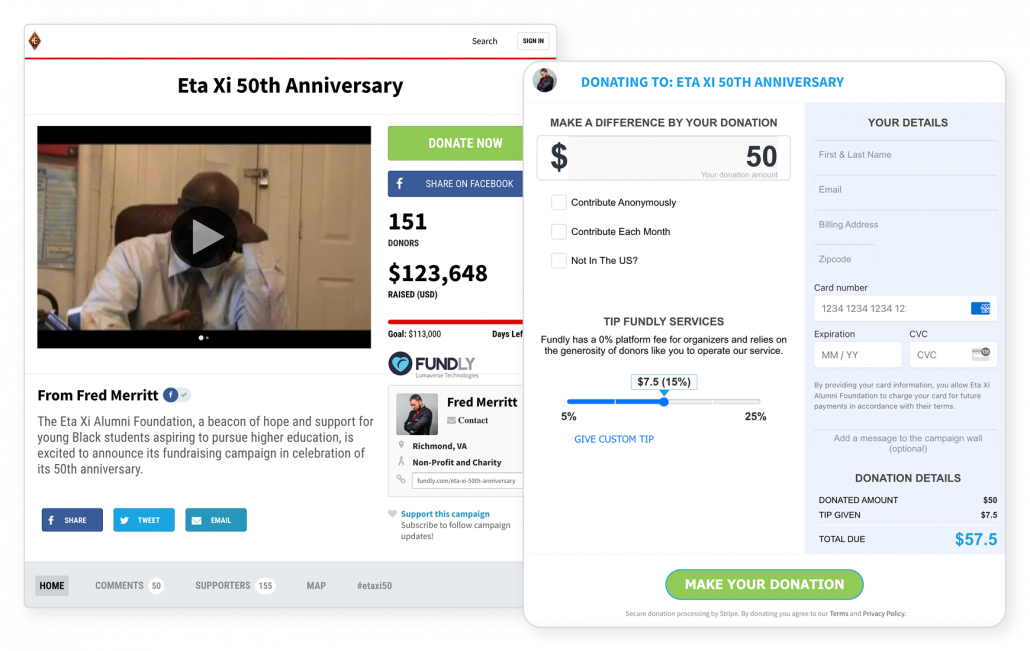

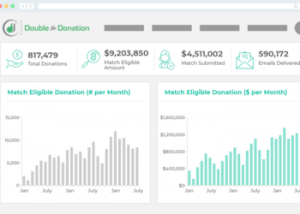
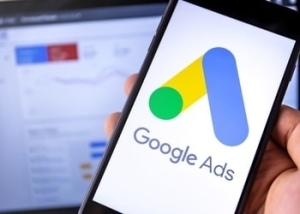


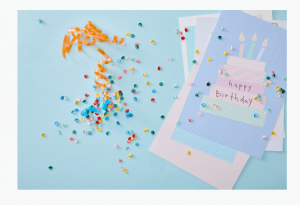































































































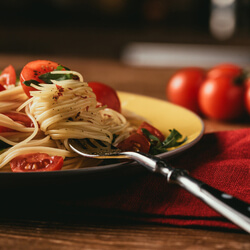

























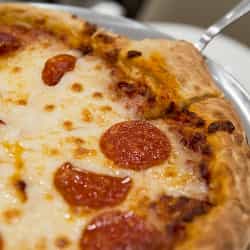

























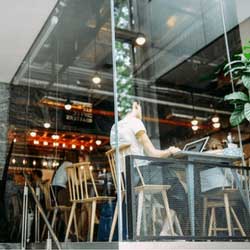





























































 Joseph Oriente is the President and Founder of Capturepoint
Joseph Oriente is the President and Founder of Capturepoint
